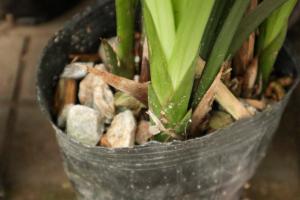Introduction
If you have a plant pot without a drainage hole, or if you need to create an additional hole for your plant, you may find yourself wondering how to make a hole in a plant pot. Fortunately, there are a few different methods that can be used to create drainage holes in plant pots of various materials.
Tools and Materials
The tools and materials needed to create a hole in a plant pot will depend on the type of pot and the method being used. Here are some common options:
Drill or power drill - suitable for ceramic, terra cotta, and plastic pots
Diamond-tipped hole saw or rotary tool - suitable for glass or stone pots
Hammer and nail or awl - suitable for terra cotta and plastic pots
Method 1: Using a Drill or Power Drill
If you have a ceramic, terra cotta, or plastic pot, a drill or power drill can be used to create a drainage hole. Here are the steps to follow:
Select a drill bit that is appropriate for the material of your pot. For ceramic or terra cotta, use a masonry bit. For plastic, use a regular drill bit or a spade bit.
Mark the spot where you want the hole to be with a pencil or marker.
Place the pot on a steady surface and clamp it down if necessary to prevent it from moving as you work.
Wear safety glasses and gloves and start drilling. Begin with a small pilot hole to guide the drill bit, then gradually increase the size of the hole until it reaches the desired diameter.
Remove any sharp edges or debris that may be left behind after drilling, and then you're done! Your pot now has a drainage hole.
Method 2: Using a Diamond-Tipped Hole Saw or Rotary Tool
If you have a glass or stone pot, a diamond-tipped hole saw or rotary tool may be necessary to create a hole. Here's what to do:
Select a hole saw with a diamond-tipped edge that is appropriate for the thickness of your pot.
Place the pot on a soft, stable surface such as a piece of carpet or foam to prevent it from slipping or cracking as you work.
Wear safety glasses and gloves and begin drilling with the hole saw. Apply light pressure and avoid applying too much force or the pot may crack.
Once the hole is complete, use a file or sandpaper to remove any rough edges or debris.
Method 3: Using a Hammer and Nail or Awl
For terra cotta or plastic pots, a hammer and nail or awl can be used to create a drainage hole. Here's how:
Mark the spot where you want the hole to be with a pencil or marker.
Hold the nail or awl at a nearly perpendicular angle to the surface of the pot, and tap it lightly with the hammer to create a small pilot hole.
Gradually increase the size of the hole by twisting and pushing the nail or awl into the pot, applying more force with each turn.
Once the hole is complete, use sandpaper or a file to remove any sharp edges or debris.
Conclusion
Now that you know how to make a hole in a plant pot, you can customize your pots to fit the needs of your plants. Just be sure to choose the right method and tools for your pot's material, and always wear appropriate safety gear when working with power tools.

 how many times do yo...
how many times do yo... how many planted tre...
how many planted tre... how many pine trees ...
how many pine trees ... how many pecan trees...
how many pecan trees... how many plants comp...
how many plants comp... how many plants can ...
how many plants can ... how many plants and ...
how many plants and ... how many pepper plan...
how many pepper plan...

































